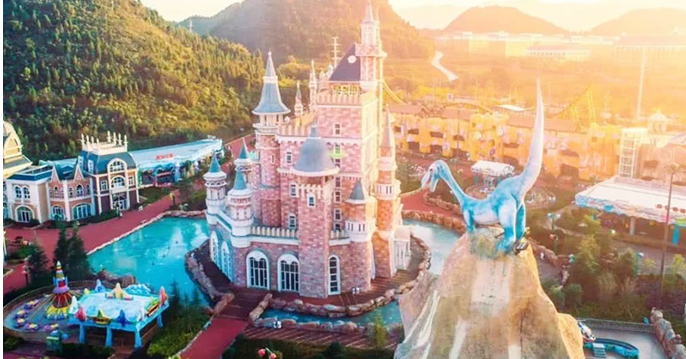- Albanian
- Arabic
- Belarusian
- Bengali
- Czech
- English
- French
- German
- Hebrew
- Hungarian
- Indonesian
- irish
- Italian
- Japanese
- kazakh
- Persian
- Russian
- Thai
- Uzbek
- Vietnamese
cost of building a roller coaster
The Cost of Building a Roller Coaster A Comprehensive Overview
Building a roller coaster is a thrilling endeavor that combines engineering marvels with the excitement of amusement parks. But behind the adrenaline rush and the screams of joy lies a hefty price tag that varies depending on numerous factors. Understanding the costs associated with constructing a roller coaster is essential for amusement park operators, investors, and enthusiasts alike.
1. Initial Feasibility Studies and Design Costs
The first step in constructing a roller coaster involves feasibility studies and design phases, which can significantly impact the overall budget. These early stages typically involve hiring experienced designers and engineers who specialize in amusement rides. Their expertise is critical for ensuring that the coaster is not only thrilling but also safe and compliant with industry regulations.
Budgeting for the design process can range from $50,000 to over $1 million, depending on the complexity of the ride and the reputation of the design firm. The design phase includes creating blueprints, performing simulations, and conducting safety assessments, all of which are crucial for the project's success.
2. Material and Construction Costs
Once the design is finalized, the next step is the actual construction of the roller coaster. This is where the bulk of the budget comes into play. Materials used in roller coaster construction can include steel, wood, and composite materials. Steel coasters are generally more expensive due to the cost of materials and the precision required in manufacturing. Wooden coasters might have lower material costs but require extensive labor and craftsmanship.
On average, the material costs for a typical steel roller coaster can range from $1.5 million to $5 million, while wooden coasters might start at around $2 million and can go much higher for intricate designs. Labor costs also play a significant role in the overall expenses; skilled labor is essential for ensuring safety and precision during construction.
3. Complex Features and Technology
cost of building a roller coaster

Modern roller coasters often incorporate advanced technology to enhance the riding experience. These features can include launched coasters, looping structures, and advanced safety systems that require additional investment. For instance, roller coasters equipped with magnetic launch systems or virtual reality elements can significantly inflate costs. Adding these features can lead to an increase in the budget by 20% to 50%, depending on the specificity and technology used.
Moreover, themed experiences that complement the roller coaster can also add to the cost. Developers often invest in elaborate scenery, special effects, and immersive storylines to increase the appeal of the attraction, which can further escalate the budget into the millions.
4. Regulatory and Safety Compliance Costs
Safety is paramount in the amusement industry, and adhering to safety regulations can contribute significantly to the costs involved in building a roller coaster. Before a roller coaster can open to the public, it must undergo rigorous testing and inspections. Engaging with safety consultants and obtaining the necessary permits and licenses can cost thousands of dollars. This aspect of the project is not just about compliance; it's about ensuring that the ride is safe for public use.
Allocating budget for these compliance costs can take up approximately 5% to 10% of the overall project expenses. Failing to comply with safety standards can lead to costly delays or even legal challenges, making this an essential consideration for any roller coaster project.
5. Maintenance and Operational Costs
Finally, it's important to consider the ongoing costs associated with operating a roller coaster. Maintenance is crucial for ensuring the ride remains safe and enjoyable for years to come. Regular inspections, repairs, and part replacements can add up, often costing anywhere from $50,000 to $200,000 annually depending on the coaster's design and usage. Additionally, staffing costs, utilities, and insurance must also be factored into the long-term budget.
Conclusion
In conclusion, the cost of building a roller coaster can vary widely based on design, materials, technology, and regulatory requirements. A simple attraction may run around $1 million, while a complex, high-tech coaster can reach up to $20 million or more. As amusement parks continue to innovate and push the boundaries of thrill-seeking experiences, the financial implications of building roller coasters will remain a significant aspect of the amusement industry. Understanding these costs is vital for anyone looking to invest in or manage such exhilarating projects.
-
Flume Ride: Thrilling Water-Based Adventure | Hebei Zhipao Amusement Equipment Manufacturing Co., Ltd.Aug.01,2025
-
Flume Ride-Hebei Zhipao Amusement Equipment Manufacturing Co., Ltd.|Thrilling Water Attraction&NIST Safety StandardsAug.01,2025
-
Double Ferris Wheel Sale | Premium Custom RidesJul.31,2025
-
Flume Ride-Hebei Zhipao|Water-Based Attraction, Safety Standards, High-Speed DescentJul.31,2025
-
Flume Ride: Thrilling Water-Based Adventure & Advanced Engineering - Hebei ZhipaoJul.31,2025
-
Flume Ride-Hebei Zhipao Amusement Equipment Manufacturing Co., Ltd.|Thrilling Water Attraction&Customizable DesignJul.30,2025
